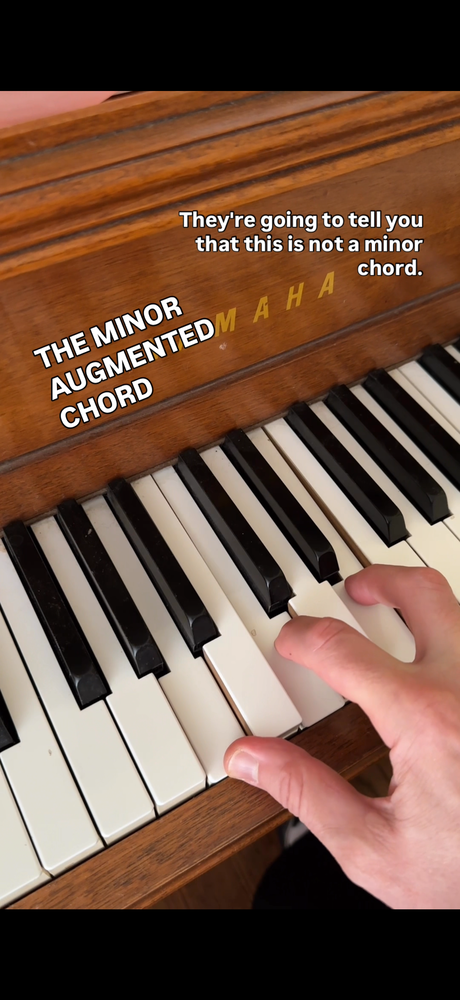They’re going to tell you that this is not a minor chord. Provocative? Sure, but hear me out.
You’ll probably learn this chord in your first piano lesson. Everyone knows if you lower the third, this becomes a minor chord. And it doesn’t matter how you arrange the notes, it’s still a minor chord.
It might take you a few more lessons to learn about augmented chords. That’s where you take a major chord and you raise the fifth by a semitone. And here’s where it gets interesting.
You probably don’t want to repeat this in public because the, well, actually, crowd is going to have a field day when I call this a minor augmented chord. And here’s why. The argument is that you can’t really have a minor augmented chord because when you rearrange these notes, it’s no longer a C minor.
It’s just an A-flat major that’s been shuffled into the first inversion. But to me, music theory is not just naming what something is, it’s understanding what something does. And you may find a few instances where this chord operates more like a minor chord than it does a major one.
This one is known as a line cliche and you’ve heard it in more than one spy theme. There’s no way you’re going to tell me that is a major chord. There are more nuanced examples too, like this one.
It’s known as a Neapolitan sixth. It operates as the first inversion of a flat two and it resolves to a five. This is a D-flat major in the first inversion going to a G.
But in my heart of hearts, a little piece of me believes this is a minor chord. Now, you can believe it or not, but either way, learn it. Share it with someone who belongs in a Beat Kitchen class.

